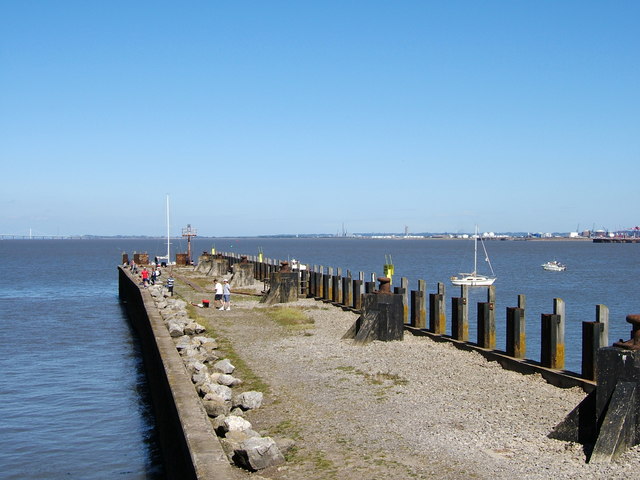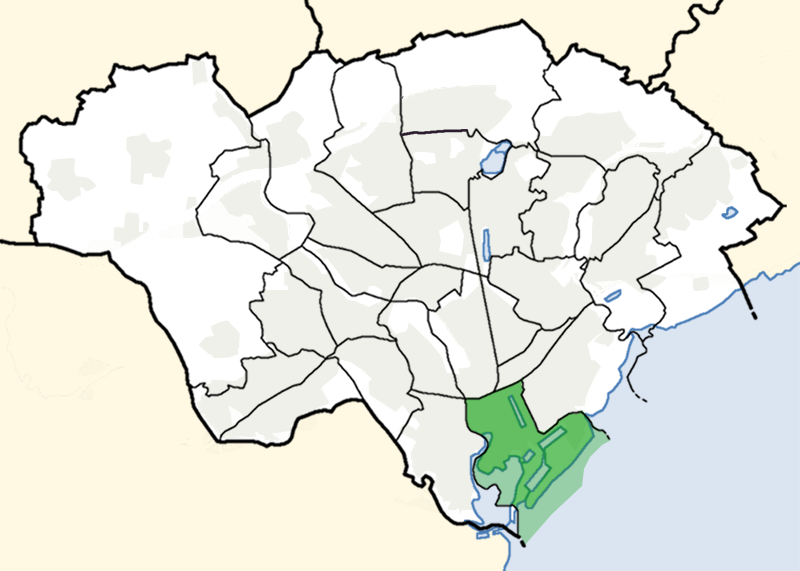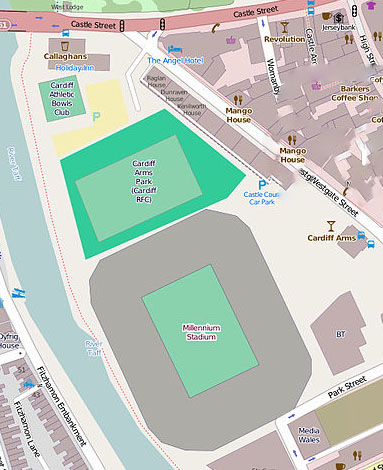|
Cardiff Waterbus
The Cardiff Waterbus is a water bus service operated along the River Taff in Cardiff, the capital of Wales. Services are operated by 4 separate companies, Cardiff Cats Ltd (operating as Cardiff Waterbus), Cardiff Cruises Ltd, Cardiff Boats Ltd, and Aquabus Water Transport Solutions Ltd, both for the leisure market and for commuters, but charter services are also offered. Boats running hourly during the day carrying up to 100 passengers from Cardiff city centre to Penarth via Cardiff Bay, forming a part of Cardiff's integrated transport system. The service started in April 2000. The Cardiff Cats service has seen many celebrities as passengers such as Emma Watson, Michelle Collins, Alison Steadman and John Challis. Landing stages Landing stages are located at: *Bute Park (for Cardiff city centre and Cardiff Castle) * Taff Mead Embankment (for Cardiff Central Station and Millennium Stadium) * Clarence Embankment (for Butetown Butetown (or ''The Docks'', cy, Tre-biwt) ... [...More Info...] [...Related Items...] OR: [Wikipedia] [Google] [Baidu] |
Cardiff Bay
Cardiff Bay ( cy, Bae Caerdydd; historically Tiger Bay; colloquially "The Bay") is an area and freshwater lake in Cardiff, Wales. The site of a former tidal bay and estuary, it serves as the river mouth of the River Taff and Ely. The body of water was converted into a lake as part of a UK Government redevelopment project, involving the damming of the rivers by the Cardiff Bay Barrage in 1999. The barrage impounds the rivers from the Severn Estuary, providing flood defence and the creation of a permanent non-tidal high water lake with limited access to the sea, serving as a core feature of the redevelopment of the area in the 1990s. Surrounding the lake is a area of redeveloped former derelict docklands which shares its name. The area is situated between Cardiff city centre and Penarth, in the communities of Butetown and Grangetown. Its waterfront is home to notable attractions, in particular regarding Welsh politics; with devolved institutions such as the Senedd buildin ... [...More Info...] [...Related Items...] OR: [Wikipedia] [Google] [Baidu] |
Bute Park
Bute Park and Arboretum () is a park in Cardiff, Wales. It comprises of landscaped gardens and parkland that once formed the grounds of Cardiff Castle. The park is named after the 3rd Marquess of Bute, whose family owned the castle. History and description The Castle Green was landscaped in the late eighteenth century by Capability Brown, but the park itself was laid out from 1873 on by Andrew Pettigrew, Head Gardener to the 3rd Marquess. The 5th Marquess of Bute presented the park to the Council in 1947 and the park is still owned and managed by Cardiff Council. Along the east bank of the River Taff and adjoining Cardiff Castle, the park offers a combination of arboretum, flower gardens and recreation grounds. Most of the park is laid to grassland but there is an abundance of woodland and tree-lined avenues. Sophia Gardens and Pontcanna Fields are on the opposite side of the river, reached by two footbridges. Sophia Gardens is home to the Glamorgan County Cricket Ground, where ... [...More Info...] [...Related Items...] OR: [Wikipedia] [Google] [Baidu] |
Ferry Transport In Wales
A ferry is a ship, watercraft or amphibious vehicle used to carry passengers, and sometimes vehicles and cargo, across a body of water. A passenger ferry with many stops, such as in Venice, Italy, is sometimes called a water bus or water taxi. Ferries form a part of the public transport systems of many waterside cities and islands, allowing direct transit between points at a capital cost much lower than bridges or tunnels. Ship connections of much larger distances (such as over long distances in water bodies like the Mediterranean Sea) may also be called ferry services, and many carry vehicles. History In ancient times The profession of the ferryman is embodied in Greek mythology in Charon, the boatman who transported souls across the River Styx to the Underworld. Speculation that a pair of oxen propelled a ship having a water wheel can be found in 4th century Roman literature "''Anonymus De Rebus Bellicis''". Though impractical, there is no reason why it could not work ... [...More Info...] [...Related Items...] OR: [Wikipedia] [Google] [Baidu] |
Portishead, Somerset
Portishead () is a coastal village on the Severn Estuary, 8 miles (12 km) to the west of Bristol, but within the unitary authority, unitary district of North Somerset, which falls within the Ceremonial counties of England, ceremonial county of Somerset, England. It has a population of around 25,000, with a growth rate considerably in excess of surrounding towns. Portishead has a long history as a fishing port. As a Royal Manor it expanded rapidly during the early 19th century around the docks, with supporting transport infrastructure. A Portishead power station, power station and chemical works were added in the 20th century, but the dock and industrial facilities have since closed and been redeveloped into a marina and residential areas. Portishead was also the telephone control centre used by British Telecom (BT) for non-direct dialled calls to maritime vessels, a service known as Portishead Radio. The town's population is expanding, and Portishead is now primarily a dormi ... [...More Info...] [...Related Items...] OR: [Wikipedia] [Google] [Baidu] |
Cogan, Vale Of Glamorgan
Cogan is a suburb of Penarth in the Vale of Glamorgan, Wales south of the centre of the Welsh capital city of Cardiff. Cogan contains one of the vale's four major leisure centres. History Cogan Pill The area that would become Cogan was known as Cogan Pill for much of its history. The pil (a tidal inlet, used as a harbour) lay within the commote of Dinas Powys and joined into the River Ely near today's Pont y Werin footbridge. The Pîl is no longer extant, having been developed into the Penarth Dock in the nineteenth century. The importance of the Pîl is however, still evident by its impact on the local toponymy, with Pill Street, Cogan Pill Road and the Cogan Pill House all being named for it. Cogan Pill House Maps of the Cogan area before the 1850s invariably mark the Cogan Pill and Cogan Pill House, but it is unclear when this house (now known as The Baron's Court) was first built. The historian David King suggested the site as a possible location for an earlier castle ... [...More Info...] [...Related Items...] OR: [Wikipedia] [Google] [Baidu] |
Cardiff Bay Barrage
Cardiff Bay Barrage ( cy, Morglawdd Bae Caerdydd) lies across the mouth of Cardiff Bay, Wales between Queen Alexandra Dock and Penarth Head. It was one of the largest civil engineering projects in Europe during construction in the 1990s. History Origin The origin of the scheme dates back to a visit by Nicholas Edwards, the Secretary of State for Wales, to the largely-derelict Cardiff docklands in the early 1980s. An avid opera enthusiast, Edwards envisaged a scheme to revitalise the area incorporating new homes, shops, restaurants and, as a centrepiece, an opera house at the waterside. However the tidal nature of Cardiff Bay, exposing extensive mudflats save for two hours either side of high water, was seen as aesthetically unappealing. Edwards credited the solution to this perceived problem to a Welsh Office civil servant, Freddie Watson. Watson proposed building a barrage stretching across the mouth of Cardiff Bay from Cardiff Docks to Penarth, which would impound freshw ... [...More Info...] [...Related Items...] OR: [Wikipedia] [Google] [Baidu] |
Mermaid Quay
In folklore, a mermaid is an aquatic creature with the head and upper body of a female human and the tail of a fish. Mermaids appear in the folklore of many cultures worldwide, including Europe, Asia, and Africa. Mermaids are sometimes associated with perilous events such as floods, storms, shipwrecks, and drownings. In other folk traditions (or sometimes within the same traditions), they can be benevolent or beneficent, bestowing boons or falling in love with humans. The male equivalent of the mermaid is the merman, also a familiar figure in folklore and heraldry. Although traditions about and sightings of mermen are less common than those of mermaids, they are generally assumed to co-exist with their female counterparts. The male and the female collectively are sometimes referred to as merfolk or merpeople. The Western concept of mermaids as beautiful, seductive singers may have been influenced by the Sirens of Greek mythology, which were originally half-birdlike, but c ... [...More Info...] [...Related Items...] OR: [Wikipedia] [Google] [Baidu] |
Grangetown, Cardiff
Grangetown (Welsh: usually ''Grangetown'', also Trelluest) is a district and community in the south of Cardiff, capital of Wales. It is one of the largest districts in the south of the city and is bordered by Riverside, Canton and Butetown. The River Taff winds its way through the area. Adjacent to the city's Cardiff Bay area, Grangetown is experiencing a period of gentrification and improvements in its infrastructure. Its population as of 2011 was 19,385 in 8,261 households. One of the "five towns of Cardiff", the others are Butetown, Crockherbtown, Newtown and Temperance Town. Grangetown is a diverse and multiracial district and has a significant population of Somali, Asian and mixed-race residents. It is home to a Swaminarayan Temple and various mosques. Etymology The name ''Grangetown'' is the usual form in Welsh. The variants ''Y Grange'' (dating back to the nineteenth century) and ''Y Grênj'' (equivalents of ''The Grange'') are sometimes seen. Owen John Thomas has ... [...More Info...] [...Related Items...] OR: [Wikipedia] [Google] [Baidu] |
Butetown
Butetown (or ''The Docks'', cy, Tre-biwt) is a district and community in the south of the city of Cardiff, the capital of Wales. It was originally a model housing estate built in the early 19th century by the 2nd Marquess of Bute, for whose title the area was named. Commonly known as "Tiger Bay", this area became one of the UK's first multicultural communities with people from over 50 countries settled here by the outbreak of the First World War, working in the docks and allied industries. Some of the largest communities included the Somalis, Yemenis and Greeks, whose influence still lives on today. A Greek Orthodox church still stands at the top of Bute Street. It is known as one of the "five towns of Cardiff", the others being Crockherbtown, Grangetown, Newtown and Temperance Town. The population of the ward and community taken at the 2011 census was 10,125. It is estimated that the Butetown's population increased to 14,094 by 2019. History By 1911 the proportion of ... [...More Info...] [...Related Items...] OR: [Wikipedia] [Google] [Baidu] |
Millennium Stadium
The Millennium Stadium ( cy, Stadiwm y Mileniwm), known since 2016 as the Principality Stadium ( cy, Stadiwm Principality) for sponsorship reasons, is the national stadium of Wales. Located in Cardiff, it is the home of the Wales national rugby union team and has also held Wales national football team games. Initially built to host the 1999 Rugby World Cup, it has gone on to host many other large-scale events, such as the Tsunami Relief Cardiff concert, the Super Special Stage of Wales Rally Great Britain, the Speedway Grand Prix of Great Britain and various concerts. It also hosted FA Cup, League Cup and Football League play-off finals while Wembley Stadium was being redeveloped between 2001 and 2006, as well as football matches during the 2012 Summer Olympics. The stadium is owned by Millennium Stadium plc, a subsidiary company of the Welsh Rugby Union (WRU). The architects were Bligh Lobb Sports Architecture. The structural engineers were WS Atkins and the building co ... [...More Info...] [...Related Items...] OR: [Wikipedia] [Google] [Baidu] |
Cardiff Central Railway Station
, symbol_location = gb , symbol = rail , image = Cardiff Central station (26526139271).jpg , caption = 1930s frontage of Cardiff Central station (northern entrance) , borough = Cardiff, City and County of Cardiff , country = Wales , coordinates = , grid_name = Grid reference , grid_position = , owned = Network Rail , manager = Transport for Wales Rail , platforms = 8 , code = CDF , classification = DfT category A , years = 19 June 1850 , events = Opened as ''Cardiff'' , years1 = 1896 , events1 = Enlarged , years2 = 1924 , events2 = Renamed ''Cardiff General'' , years3 = 1931–34 , events3 = Rebuilt , years4 = 1940 , events4 = Merged with Cardiff Riverside station , years5 = 1964 , events5 = Riverside platforms closed , years6 = 1973 , events6 = Renamed ''Cardiff Central'' , years7 = 2015-17 , events7 = Enlarged , mpassengers = , footnotes = Passenger statistics from the Office of Rail and Road , mapframe=yes , mapframe-zoom = 13 Cardiff Cen ... [...More Info...] [...Related Items...] OR: [Wikipedia] [Google] [Baidu] |
Cardiff Castle
Cardiff Castle ( cy, Castell Caerdydd) is a medieval castle and Victorian Gothic revival mansion located in the city centre of Cardiff, Wales. The original motte and bailey castle was built in the late 11th century by Norman invaders on top of a 3rd-century Roman fort. The castle was commissioned either by William the Conqueror or by Robert Fitzhamon, and formed the heart of the medieval town of Cardiff and the Marcher Lord territory of Glamorgan. In the 12th century the castle began to be rebuilt in stone, probably by Robert of Gloucester, with a shell keep and substantial defensive walls being erected. Further work was conducted by the 6th Earl of Gloucester in the second half of the 13th century. Cardiff Castle was repeatedly involved in the conflicts between the Anglo-Normans and the Welsh, being attacked several times in the 12th century, and stormed in 1404 during the revolt of Owain Glyndŵr. After being held by the de Clare and Despenser families for several centu ... [...More Info...] [...Related Items...] OR: [Wikipedia] [Google] [Baidu] |








